How to Start a Small-Scale Forestry Business
- August 20, 2024
- 0 comment
Starting a small-scale forestry business can be an exciting venture for those passionate about sustainable land management and looking to establish a profitable enterprise aligned with environmental values.
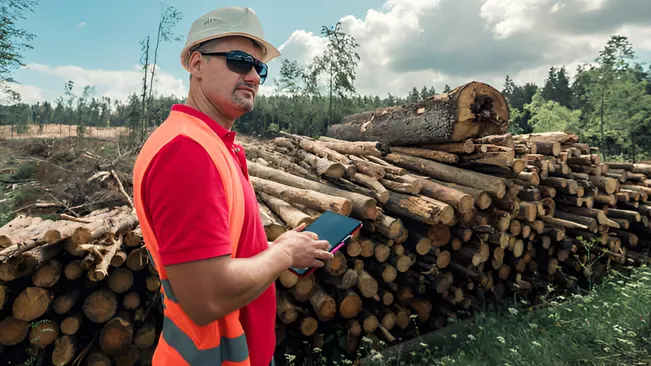
We will discuss the essential steps you need to launch your own small-scale forestry business, from market research and business planning to examples of potential business ideas you might consider.
What is a Small-scale forestry business?
A small-scale forestry business focuses on managing forests or woodlots with a lower capital investment than large-scale industrial forestry. It typically involves sustainable practices, such as selective logging, reforestation, and habitat preservation.
Starting a small-scale forestry business offers several advantages, including lower start-up costs, operational flexibility, and the ability to target niche markets that may be overlooked by larger companies.
Here are the steps to start a Small-Scale Forestry Business
1. Conducting Market Research
Before launching your business, conducting thorough market research to understand market demand and identify current trends in forestry will help you position your business effectively.
For example, there is growing demand for sustainably sourced timber and eco-friendly products. Additionally, many landowners seek services that maintain the ecological balance of their properties while providing economic benefits.

Identifying Target Clients
Identifying your target clients is another essential step. Your clients could range from individual landowners and local businesses to conservation organizations and government bodies.
Assess the competition in your area and look for gaps that your business can fill, such as providing services in regions underserved by larger forestry operations or offering specialized services like eco-tourism or native plant nurseries.
2. Developing a Comprehensive Business Plan
A well-structured business plan is the foundation of any successful venture. It outlines your goals, business model, and financial planning, providing a roadmap for your business.

Your business model should reflect the specific needs of your target market, whether as a sole proprietorship, partnership, or limited liability company (LLC). Each structure has its advantages and disadvantages, so choose the one that aligns best with your business goals and risk tolerance.
Structuring Your Business Model
Choosing the right business structure is essential, as it affects your liability, taxation, and operational flexibility. Options like sole proprietorship, partnership, and LLCs each offer unique benefits and risks, so consider your specific needs and risk tolerance when deciding which structure to adopt.
Financial Planning
Financial planning is also a critical component of your business plan. Estimate start-up costs, including expenses for equipment, land acquisition or leasing, labor, and marketing. Prepare financial projections that cover the first few years of operation, including expected revenue, operating expenses, and profit margins.
3. Navigating Legal and Regulatory Requirements
Operating a forestry business requires adhering to various legal and regulatory obligations. Securing the necessary licenses and permits, including those for logging, timber transport, and reforestation activities, is essential for compliance with environmental regulations.

Environmental compliance is especially important in forestry. Your business should adhere to sustainable practices, such as minimizing deforestation, protecting wildlife habitats, and following best practices for soil and water conservation.
Staying informed about local and national regulations will help you avoid legal issues and build a reputation as a responsible forestry business.
4. Investing in the Right Equipment
Choosing the right equipment is vital for the efficiency and success of your small-scale forestry business. Essential tools and machinery may include chainsaws, skidders, tractors, and portable sawmills.
The type of equipment you need will depend on your specific services, such as logging, milling, or firewood production. When deciding between new and used equipment, consider factors like cost, reliability, and availability of maintenance services.

While new equipment comes with warranties and the latest technology, used equipment can be a more affordable option, especially if you’re just starting. Regular maintenance and timely upgrades will ensure your equipment remains in good working condition, minimizing downtime and maximizing productivity.
5. Marketing Your Small-Scale Forestry Business
Effective marketing is key to attracting clients and growing your business. Start by creating a strong brand identity that reflects your values, such as sustainability, quality, and reliability. Your branding should be consistent across all marketing materials, from your logo and website to business cards and promotional brochures.
Digital Marketing Strategies
Digital marketing strategies are particularly effective in today’s connected world. Ensure your business has a professional website that showcases your services, shares client testimonials, and includes contact information.

Invest in search engine optimization (SEO) to increase your visibility online, and use social media platforms to engage with potential clients and share updates about your business.
Building Client Relationships
Building client relationships is another critical aspect of marketing. Networking with other professionals in the forestry industry, attending local events, and joining industry associations can help you connect with potential clients and partners. Providing excellent customer service and delivering high-quality work will lead to word-of-mouth referrals, which are invaluable for growing your business.
Examples of Small-Scale Forestry Businesses to Consider
When considering starting a small-scale forestry business, it’s essential to think about niche opportunities that align with your skills, resources, and market demand. Here are some examples:
- Custom Milling and Lumber Sales:
- A portable sawmill business allows you to offer on-site milling services for landowners who want to turn their timber into usable lumber. This service is particularly attractive in rural areas where access to large mills may be limited.
- Market Potential: There’s a strong demand from DIY builders, local craftsmen, and landowners looking to maximize the value of their timber.
- A portable sawmill business allows you to offer on-site milling services for landowners who want to turn their timber into usable lumber. This service is particularly attractive in rural areas where access to large mills may be limited.
- Firewood Production:
- Firewood production involves harvesting, splitting, and selling firewood. This business is especially profitable in regions with cold winters where wood is a primary heating source.
- Market Potential: Consistent demand in cold climates and potential for expanding into related products like kindling or wood chips.
- Firewood production involves harvesting, splitting, and selling firewood. This business is especially profitable in regions with cold winters where wood is a primary heating source.
- Christmas Tree Farm:
- Growing and selling Christmas trees is a seasonal business that can generate significant income during the holiday season. Trees can be sold directly to consumers or through partnerships with local retailers.
- Market Potential: High demand during the holiday season, with opportunities to diversify into wreaths, garlands, and other festive decorations.
- Growing and selling Christmas trees is a seasonal business that can generate significant income during the holiday season. Trees can be sold directly to consumers or through partnerships with local retailers.
- Forest-Based Eco-Tourism:
- Eco-tourism businesses offer experiences like guided forest walks, wildlife observation tours, or educational workshops that connect people with nature. This business model capitalizes on the growing trend of sustainable and responsible tourism.
- Market Potential: Increasing interest in eco-friendly travel experiences, particularly among environmentally conscious consumers.
- Eco-tourism businesses offer experiences like guided forest walks, wildlife observation tours, or educational workshops that connect people with nature. This business model capitalizes on the growing trend of sustainable and responsible tourism.
- Native Plant Nursery:
- A native plant nursery focuses on cultivating and selling indigenous plants and trees that are adapted to the local environment. These nurseries are essential for restoration projects, landscaping, and conservation efforts.
- Market Potential: High demand from landscapers, conservation projects, and homeowners interested in sustainable gardening.
- A native plant nursery focuses on cultivating and selling indigenous plants and trees that are adapted to the local environment. These nurseries are essential for restoration projects, landscaping, and conservation efforts.
- Specialty Timber Harvesting:
- Specialty timber harvesting involves focusing on high-value wood species or offering selective logging services that prioritize sustainability and minimal environmental impact.
- Market Potential: Strong demand in markets that value eco-friendly practices and high-quality wood products, such as luxury furniture makers and architects.
- Specialty timber harvesting involves focusing on high-value wood species or offering selective logging services that prioritize sustainability and minimal environmental impact.
Conclusion
Starting a small-scale forestry business can be both profitable and fulfilling, especially if you are passionate about sustainable land management. By conducting thorough market research, developing a solid business plan, and investing in the right equipment, you can build a successful business that meets your clients’ needs while contributing to environmental conservation.
Consider the examples of small-scale forestry businesses discussed in this article, and take the first steps toward launching your own venture in this rewarding industry.
Frequently Asked Questions (FAQ’s)
- What is a small-scale forestry business?
A small-scale forestry business involves managing forests or woodlots with lower capital investment, focusing on sustainable practices like selective logging, reforestation, and habitat preservation. It typically serves local markets and niche demands. - What are the first steps to starting a small-scale forestry business?
Begin by conducting market research to understand demand, competition, and client needs. Develop a comprehensive business plan that outlines your goals, business model, financial planning, and marketing strategy. - Do I need any specific licenses or permits to start a forestry business?
Yes, you may need various licenses and permits depending on your location and the nature of your activities, such as logging permits, transportation permits, and environmental compliance certifications. - What kind of equipment is essential for a small-scale forestry business?
Essential equipment typically includes chainsaws, skidders, tractors, and portable sawmills. The specific tools you need depend on the services you offer, like logging, milling, or firewood production. - How much capital do I need to start a small-scale forestry business?
The required capital varies depending on factors like equipment costs, land acquisition or leasing, labor, and marketing. Conducting thorough financial planning and preparing for start-up expenses is crucial. - What are some profitable small-scale forestry business ideas?
Profitable ideas include custom milling and lumber sales, firewood production, Christmas tree farming, forest-based eco-tourism, and operating a native plant nursery. - How can I market my small-scale forestry business effectively?
Focus on creating a strong brand identity that emphasizes sustainability and quality. Utilize digital marketing strategies such as building a professional website, implementing SEO, and engaging with clients on social media. - What are the challenges of running a small-scale forestry business?
Challenges include complying with environmental regulations, managing equipment maintenance, staying competitive in the market, and ensuring sustainable practices that balance profitability with conservation. - How can I ensure my forestry business is environmentally sustainable?
Adhere to best practices like minimizing deforestation, protecting wildlife habitats, and following soil and water conservation guidelines. Being environmentally responsible can also enhance your business reputation. - Can I operate a small-scale forestry business part-time?
Yes, some small-scale forestry businesses, like firewood production or native plant nurseries, can be operated part-time, depending on your goals and the scale of operations.

Jordan Blake
Forestry AuthorJordan Blake is a forestry expert with over 15 years of experience in arboriculture and community education. Passionate about sustainable forest management, Jordan regularly writes for Forestry.com and Tree Care Magazine. Holding certifications in tree health assessments and urban forestry management, Jordan conducts workshops to educate the public on sustainable practices. Jordan has a degree in Environmental Science and enjoys hiking and photography in their free time.

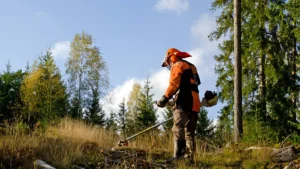
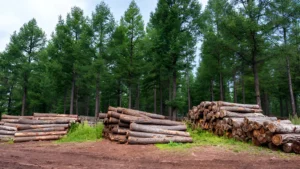
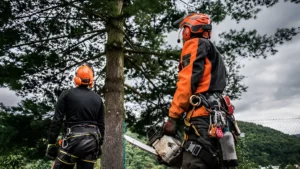
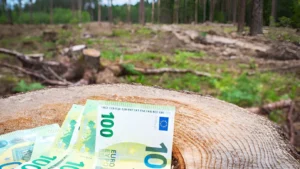

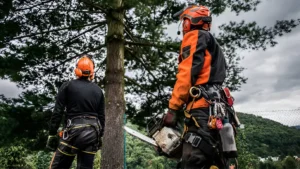

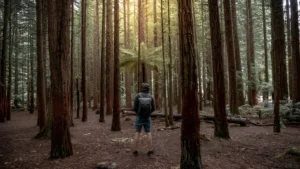
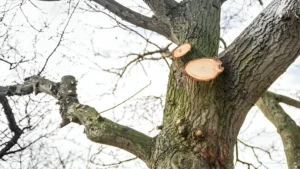

Leave your comment